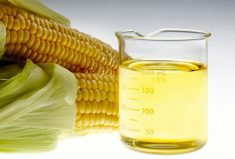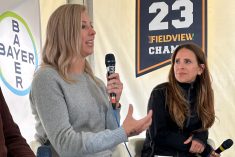The marketplace for precision agriculture technology is sorting itself out, but it still has a way to go before it will be mature and have predictable uses for farmers, says a U.S. agriculture economist.
Dr. Keith Coble, chair of the Mississippi State University’s department of agricultural economics, says we’re in the “overexuberance” phase of technology development, driven significant venture capital injections and moves by big companies that drove everyone else in the industry to jump into precision agriculture.
Coble, who spoke to the Big Data, Changing Climate and Agriculture conference put on recently by the department of food, agriculture and resource economics at the University of Guelph, said the deal that saw Monsanto buy Climate Corp., a leader in agriculture data, sent other companies scrambling.
Read Also

Senft to step down as CEO of Seeds Canada
Barry Senft, the founding CEO of the five-year-old Seeds Canada organization is stepping down as of January 2026.
The solutions they came up with don’t always give farmers value, said Coble, who was working on Capitol Hill as part of an appointment to the U.S. Department of Agriculture, when the Climate Corp. deal news broke.
“We’ve seen a lot of change over last five or six years,” he said. “Can we harness the data to make it more useful and valuable?”
There have been some failures, and that has scared off the results-driven venture capital funds. AgFunder reports that 2016 agriculture-focused venture capital investment declined 30 per cent compared to 2015, but was still ahead of 2014.
There are several impediments to farmers making full use of their data, says Coble, including the fact that it is trapped in multiple devices that don’t talk to each other.
Coble expected the big hitters in the industry to win out, including Monsanto and John Deere, as farmers need systems that will work with all of their data.
Big data in agriculture, he said, will defined by 4 ‘Vs’:
Volume – The amount of data is getting so huge that you can’t move it into analytical tools. The analytics have to move to the data, or be built into the data gathering.
Velocity – It may seem like farmers are creating a lot of data now, but the next step is velocity of data — having current data and data that cover the extent of a production system. That will include sensors that will enable managers to make decisions as things happen, not after the fact.
Variety – Sensors are being developed through the agriculture production chain and will be on equipment and controllers and in ear tags. The challenge will be to have that data structured so that it is usable.
Veracity – Big data is messy. Sensors and humans both can make errors, said Coble, and it will often not be scientifically complete.
“It will have missing variable problems. The person who can put it together and effectively use it will be very valuable,” he said.
For example, don’t calibrate your yield monitor on a combine and “you will get really useless data.”
Beyond the challenge of getting useful and clean data is the whole question of privacy and data ownership. Farmers are suspicious about handing over their data. They have several worries, said Coble, including that companies with whom they share their data will use it as leverage during pricing or service negotiations. There are trust issues.
Data availability issues apply to researchers too, said Coble, and having reliable data is integrally important to researchers.
He expects farm data will be housed in an independent repository. A researcher will be able to access the data to do the research, but won’t be able to keep the data.
The questions are legitimate, he said, and the law has not yet caught up. He showed a slide of an image given to him by a Mississippi Delta farmer. Who owns the image? he asked.
“Under U.S. law, we don’t know,” he said. “I care less about ownership. I care more about who has access. Will farmers share with us as researchers or government so we can make better policy?”
These are question the industry will have to sort out before big data can be translated into bigger efficiencies or bigger profits.
— John Greig is a field editor for Glacier FarmMedia based at Ailsa Craig, Ont. Follow him at @jgreig on Twitter.




















